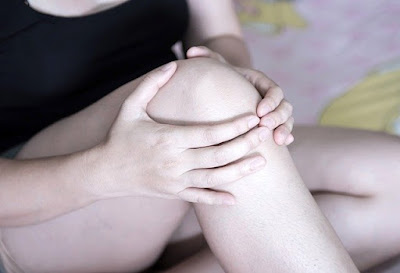Featured Post
- Get link
- X
- Other Apps
These are 9 ways to treat rheumatoid osteoarthritis
Arthritis means inflammation of the joints.Rheumatoid Osteoarthritis is just one type of arthritis. It is common for it to occur as we age.When it manifests, the gelatinous material found in the joints between the bones, called cartilage, begins to wear away. Over time this gradually gets worse. It can affect any joint, but it usually affects the hands, knees, and hips. Regular side effects incorporate torment, firmness, expanding, and trouble moving the joint. Movement can aggravate torment.
According to the Centers for Disease Control and Prevention, more than 30 million people in the United States suffer from osteoarthritis. Women over 50 are more likely than men. Treatment of arthritis depends on the severity of your symptoms and the joints affected. Treatment can decrease symptoms, improve functionality, and delay the evolution of this condition. Your medical provider will work with you to formulate a personalized treatment tailored to what you need, your goals, and your values.
Here are some treatments:
1. Rest:
Arthritis symptoms worsen with activity and are relieved with rest. Rest can ease arthritic pain. Warning: standing too long is not recommended as this can decondition the body.
2.Medications:
These include acetaminophen (Tylenol and others) and non-steroidal anti-inflammatory drugs (such as ibuprofen, naproxen, and others). Hyaluronate steroids can also be injected into the joints. Creams like capsaicin and diclofenac can also be helpful. Narcotic pain relievers can help provide short-term relief. Warning: Long-term narcotics are NOT recommended because they can be addictive.
3. Weight loss (if you are overweight):
Obesity has been linked to the development of osteoarthritis. Losing 10 percent of body weight through diet and exercise has been linked to decreased pain.
4.Assistive devices:
canes, and potholders can facilitate daily activities and reduce stress on the joints. Your healthcare provider will help you decide which assistive device is best for you.
5.Orthoses:
These can decrease stress on the joint and help stabilize unstable joints. These include appliances such as cushioned shoes, splints, and braces.
6. Hot or cold compress:
Hot compresses, heating pads, and hot water bottles can be used to apply heat to the joint. To avoid burns, use only lukewarm water for no more than 20 minutes at a time. Ice packs or hypothermic nebulizers can be used to apply a cold pack. A hot or cold compress can ease arthritic pain.
7. Physical therapy:
This would diminish torment and increment muscle strength. This often involves a combination of aerobic and strengthening exercises.
8.Surgery:
Reserved for severe arthritis that does not respond to treatment. It usually encompasses joint replacement. Your doctor will review you to make sure your health is in the best condition for the surgery. A period of rehabilitation usually follows after surgery.
9.Dietary supplements:
During controlled clinical studies, glucosamine was no more effective than placebo. Chondroitin appears to provide minimal benefits. The combination of both has not been proven to be of many benefits.
Osteoarthritis doesn't have to be debilitating. Talk to your doctor about ways to treat and manage this condition so that you can lead a better life again. source (1)
It may interest you:10 foods to lack of iron deficiency




Comments
Post a Comment